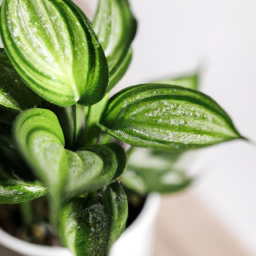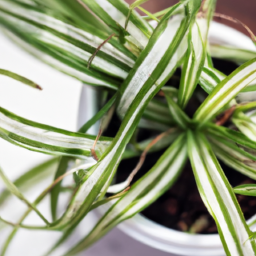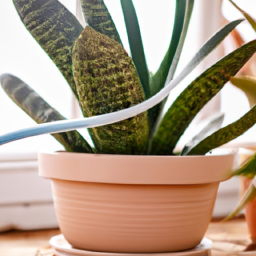
Are indoor plants good for your health? It’s a question that has been asked by many individuals seeking to create a healthier and more vibrant living space. Indoor plants have become increasingly popular in recent years, not just for their aesthetic appeal, but also for their potential health benefits. From improving air quality to reducing stress levels, these green companions have been touted as a natural remedy for a variety of ailments. In this blog post, we will explore the potential benefits of indoor plants on your health and well-being, and delve into the science behind their positive effects. So, if you’ve ever wondered whether having a few potted plants around your home or office could actually benefit your health, keep reading to find out more.
The Benefits of Indoor Plants for Your Health
Indoor plants not only add beauty and vibrancy to your living space but also offer numerous health benefits. These green companions can improve the air quality, reduce stress levels, boost productivity, and enhance overall well-being. In this article, we will explore the various ways indoor plants positively impact your health and provide you with a step-by-step guide to incorporating them into your home or office.
Improved Air Quality
One of the primary benefits of indoor plants is their ability to purify the air by removing harmful toxins and releasing oxygen. Through a process called photosynthesis, plants absorb carbon dioxide and release oxygen, which can help combat indoor air pollution. Studies have shown that having indoor plants can reduce the levels of volatile organic compounds (VOCs) such as benzene, formaldehyde, and trichloroethylene in the air.
Moreover, plants can also increase humidity levels in dry indoor environments, which is particularly beneficial during the winter months when heating systems tend to dry out the air. By releasing moisture through their leaves, plants can help alleviate respiratory issues, dry skin, and sore throats.
To maximize the air-purifying effects of indoor plants, consider choosing varieties known for their air-cleansing properties such as snake plants, spider plants, peace lilies, and pothos. It is recommended to have at least one plant per 100 square feet of living space for optimal air purification.
Stress Reduction
Indoor plants have a calming and soothing effect on our minds, which can significantly reduce stress levels. Research has shown that being around plants can lower blood pressure, heart rate, and cortisol levels – the hormone associated with stress. The presence of greenery indoors can create a sense of tranquility, promoting relaxation and a positive mood.
Incorporating plants into your workspace can also enhance productivity and concentration. A study conducted by the University of Exeter found that employees working in offices with plants showed a 15% increase in productivity compared to those without any greenery. The natural elements provided by indoor plants can improve focus, creativity, and overall job satisfaction.
To experience the stress-reducing benefits of indoor plants, place them strategically in areas where you spend the most time, such as your living room, bedroom, or office. Consider low-maintenance plants like aloe vera, lavender, or golden pothos, which are not only beautiful but also known for their stress-relieving properties.
Enhanced Well-being
Having indoor plants can positively impact your overall well-being in multiple ways. Firstly, plants can help purify the air you breathe, reducing the risk of respiratory issues and allergies. Clean air promotes better sleep, improved cognitive function, and a stronger immune system.
Secondly, indoor plants can create a sense of connection with nature, even if you live in a bustling city. This biophilic connection has been proven to enhance mood, increase self-esteem, and reduce symptoms of anxiety and depression. The presence of plants in hospitals and healthcare facilities has also been linked to faster recovery times and reduced pain perception in patients.
To reap the full benefits of indoor plants for your well-being, choose a variety of plants with different shapes, colors, and textures. This diversity will not only add visual interest to your space but also provide a range of benefits. Consider plants like Boston ferns, rubber plants, or peace lilies, which are known for their air-purifying and mood-boosting properties.
In conclusion, indoor plants offer a myriad of health benefits, from improving air quality to reducing stress and enhancing overall well-being. By incorporating these green companions into your living or working space, you can create a healthier and more enjoyable environment. So, why not bring some nature indoors and experience the positive impact it can have on your health and happiness?

How Indoor Plants Improve Indoor Air Quality
When it comes to creating a healthy and comfortable indoor environment, many people overlook the importance of indoor air quality. Indoor air can be polluted with various toxins and pollutants, which can have detrimental effects on our health. Luckily, there is a natural and effective way to improve indoor air quality – indoor plants. In this article, we will explore how indoor plants can improve indoor air quality and benefit our overall health.
1. Plants Remove Harmful Chemicals
Indoor plants have the remarkable ability to remove harmful chemicals from the air through a process called phytoremediation. They absorb these toxins through their leaves and roots, effectively purifying the air we breathe. Common indoor pollutants such as formaldehyde, benzene, and trichloroethylene can be effectively removed by certain plants.
One example of a powerful air purifying plant is the snake plant (Sansevieria). It is known for its ability to remove formaldehyde, a common chemical found in household products and building materials. Spider plants (Chlorophytum comosum) are also excellent at removing formaldehyde, as well as carbon monoxide and xylene.
Another plant that deserves mention is the peace lily (Spathiphyllum). It is known for its ability to remove not only formaldehyde but also benzene and trichloroethylene, which are commonly found in cleaning products and synthetic materials. These plants, along with many others, can significantly improve indoor air quality by reducing the levels of these harmful chemicals.
2. Plants Increase Humidity
Indoor air can often become dry, especially during the winter months when heating systems are in use. Dry air can lead to various health issues such as dry skin, irritated eyes, and respiratory problems. Indoor plants can help combat this problem by increasing humidity levels in the air.
Plants naturally release moisture through a process called transpiration. This release of water vapor increases the humidity in the surrounding air, creating a more comfortable and healthier indoor environment. Having a few plants in your living space can make a noticeable difference in maintaining optimal humidity levels.
Some plants that are particularly effective at increasing humidity include Boston ferns (Nephrolepis exaltata), areca palms (Dypsis lutescens), and peace lilies (Spathiphyllum). These plants not only add a touch of greenery to your space but also contribute to a more pleasant and humid indoor environment.
3. Plants Reduce Airborne Dust and Mold
Dust and mold are common indoor allergens that can cause respiratory problems and allergies. Indoor plants can help reduce the levels of airborne dust and mold, making the air cleaner and healthier to breathe.
Plants act as natural air filters, trapping dust particles and mold spores on their leaves and in the surrounding soil. This can significantly reduce the amount of these allergens in the air, providing relief for those who suffer from allergies or respiratory conditions.
Some plants that are particularly effective at reducing airborne dust and mold include English ivy (Hedera helix), rubber plants (Ficus elastica), and peace lilies (Spathiphyllum). These plants are not only aesthetically pleasing but also contribute to a cleaner and healthier indoor environment.
In conclusion, indoor plants offer numerous benefits for our health, and one of the most notable advantages is their ability to improve indoor air quality. By removing harmful chemicals, increasing humidity, and reducing airborne dust and mold, plants create a healthier and more comfortable living space. So, why not bring some greenery into your home and reap the benefits of improved indoor air quality?

Indoor Plants as Natural Stress Relievers
Life can be incredibly hectic and stressful at times, leaving us yearning for a sense of calm and tranquility. While there are numerous methods to combat stress, one often overlooked solution lies right within our homes – indoor plants. These green companions not only add beauty to our living spaces but also offer a plethora of health benefits, including their ability to act as natural stress relievers. In this article, we will delve into the science behind how indoor plants can help alleviate stress and provide you with a step-by-step guide on incorporating them into your daily life.
The Science Behind Indoor Plants and Stress Relief
Before we dive into the practical aspects, let’s understand the science behind how indoor plants can effectively reduce stress. Research has shown that plants have a positive impact on our mental well-being by creating a soothing environment. Here’s how they work their magic:
1. Purifying the Air: Indoor plants act as natural air purifiers, removing harmful toxins and releasing oxygen. This cleaner air quality promotes better respiratory health and can help lower stress levels. Breathing in fresh, clean air can have a calming effect on our minds, allowing us to relax and unwind.
2. Boosting Mood and Productivity: Studies have demonstrated that being surrounded by greenery can enhance our mood and productivity. Indoor plants have been found to reduce anxiety, depression, and fatigue, while simultaneously improving focus and creativity. By creating a more positive and vibrant atmosphere, plants contribute to stress reduction.
3. Creating a Connection with Nature: Humans have an inherent connection with nature, known as biophilia. Having indoor plants in our surroundings allows us to fulfill this innate need, even when we’re indoors. This connection with nature has been proven to reduce stress, boost mood, and improve overall well-being.
Step-by-Step Guide to Incorporating Indoor Plants for Stress Relief
Now that we understand the science behind indoor plants and stress relief, let’s explore how to incorporate them into our lives effectively:
1. Choose the Right Plants: Not all plants are created equal when it comes to stress relief. Look for plants that are known for their air-purifying properties, such as snake plants, peace lilies, and spider plants. These varieties are low-maintenance and can thrive in indoor environments, making them ideal choices for beginners.
2. Create Green Spaces: Identify areas in your home where you spend the most time or feel the most stressed. These could be your workspace, living room, or bedroom. Introduce plants into these spaces to create green sanctuaries that promote relaxation. Consider using hanging plants, potted plants, or even vertical gardens to maximize the impact.
3. Care for Your Plants: Indoor plants require regular care to thrive and provide optimal stress relief. Ensure they receive adequate sunlight, water, and nutrients. Each plant has specific care requirements, so it’s essential to research and understand the needs of the plants you choose. Remember, taking care of your plants can also be a therapeutic activity in itself.
4. Incorporate Plant Rituals: Introduce plant-related rituals into your daily routine to enhance the stress-relieving benefits. This could involve watering your plants in the morning, taking a few minutes to observe their growth, or even talking to them. Engaging with your indoor plants mindfully can help you relax, unwind, and connect with nature on a deeper level.
5. Experiment and Personalize: Everyone’s stress relief preferences are unique, so don’t be afraid to experiment and personalize your indoor plant setup. Try different plant arrangements, sizes, and types to find what resonates with you the most. Some individuals may prefer a minimalistic approach, while others may enjoy a jungle-like environment. Listen to your instincts and create a space that brings you joy and tranquility.
In conclusion, indoor plants have proven themselves to be much more than mere decorative elements. They can significantly contribute to our mental well-being by acting as natural stress relievers. By purifying the air, boosting mood and productivity, and creating a connection with nature, these green companions offer a holistic approach to stress reduction. Follow the step-by-step guide to incorporate indoor plants into your life, and embark on a journey towards a calmer and more serene existence.
Highlights of this article
Indoor plants have become increasingly popular in homes and offices, not just for their aesthetic appeal, but also for their potential health benefits. Many studies suggest that having plants indoors can improve air quality, reduce stress levels, and boost overall well-being. So, are indoor plants really good for your health? Let’s explore the evidence.
Firstly, indoor plants are known to purify the air by absorbing harmful toxins and releasing oxygen. Research has shown that certain plants, such as the snake plant and peace lily, can effectively remove pollutants like formaldehyde and benzene from the air. This can be particularly beneficial for those living in urban areas with high levels of air pollution. Moreover, plants release moisture vapor through a process called transpiration, which can increase humidity and help alleviate dry skin, sore throats, and respiratory problems.
Additionally, having indoor plants can have a positive impact on mental health. Studies have found that being around plants can reduce stress, anxiety, and even improve mood. The presence of greenery indoors has been linked to increased productivity, focus, and creativity. Furthermore, caring for plants can provide a sense of purpose and responsibility, which can be particularly beneficial for individuals experiencing loneliness or depression.
In conclusion, the evidence suggests that indoor plants can indeed be beneficial for your health. Not only do they improve air quality by filtering out toxins, but they also have a positive impact on mental well-being. So, why not bring a touch of nature into your indoor spaces and enjoy the potential health benefits that plants can offer?
Q&A Corner:
Q1: How do indoor plants benefit your health?
A1: Indoor plants offer numerous health benefits. Firstly, they improve air quality by absorbing carbon dioxide and releasing oxygen through photosynthesis. This process helps to purify the air, reducing the presence of harmful toxins and increasing humidity levels. Additionally, indoor plants can reduce stress levels and enhance mood, as they have a calming effect on our minds. They also act as natural air filters, removing pollutants and allergens from the environment, thus decreasing the risk of respiratory issues and allergies.
Q2: Can indoor plants improve mental health?
A2: Absolutely! Indoor plants have been proven to have a positive impact on mental health. Being surrounded by greenery and nature indoors can help reduce feelings of anxiety, depression, and fatigue. The presence of indoor plants can create a sense of tranquility and promote relaxation, thereby improving overall mental well-being. Studies have shown that simply looking at indoor plants can reduce stress levels and increase productivity and focus.
Q3: Which indoor plants are best for improving air quality?
A3: Several indoor plants are known for their air-purifying qualities. Some popular choices include the Snake Plant (Sansevieria), Spider Plant (Chlorophytum comosum), Peace Lily (Spathiphyllum), Aloe Vera, and English Ivy (Hedera helix). These plants are efficient at removing toxins like formaldehyde, benzene, and xylene from the air. It’s recommended to have at least one indoor plant per 100 square feet of living space for optimal air purification.
Q4: How do indoor plants help with allergies?
A4: Indoor plants can help alleviate allergies by improving air quality. Many indoor plants have the ability to filter out common allergens such as dust, mold spores, and pollen. By removing these allergens from the air, indoor plants create a cleaner and healthier environment for allergy sufferers. However, it’s important to note that some individuals may be allergic to specific plants, so it’s essential to choose plants that do not trigger allergies in individuals.
Q5: Do indoor plants require a lot of maintenance?
A5: Not necessarily. While some indoor plants may require more care and attention, many varieties are low-maintenance and easy to care for. It’s important to choose plants that suit your lifestyle and the conditions of your home. Some low-maintenance indoor plants include the Snake Plant, ZZ Plant (Zamioculcas zamiifolia), Pothos (Epipremnum aureum), and Spider Plant. These plants can thrive in various light conditions and do not require frequent watering. However, all indoor plants benefit from occasional dusting of their leaves and regular monitoring of their watering needs.
Dr. Olivia Green is a botanist with over two decades of experience in indoor plant cultivation. She holds a Ph.D. in Plant Biology and has dedicated her career to researching plant behavior in controlled environments. Dr. Green is passionate about helping plant enthusiasts master the art of indoor gardening through her extensive knowledge and practical insights.


